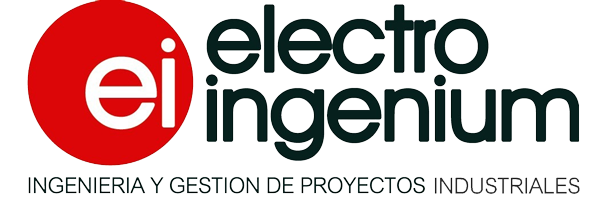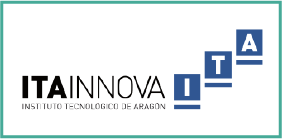Motivation of the Experiment
Prodesa is a company specialized in the design and manufacture of biomass pellet production plants. In these plants, the drying unit is one of the fundamental parts of biomass pellet manufacturing. It is the equipment with the highest energy consumption in the plant. For efficiency or emission regulations in some markets, the dryer unit must be a rotary dryer. This industrial product reduces the moisture content of solid material in contact with a hot gas. It has multiple applications, such as the drying of granulated material as cereals or seeds in the food sector. Having a tool (digital twin) to support the design of this equipment, optimize its integration in the plant's thermal process, and analyze the operation data is essential for Prodesa to improve the equipment design and its competitiveness in markets that require pellet manufacturing plants with rotary dryers.
In this context, the objective of this experiment is the development of an innovative digital tool (digital twin) to increase the competitiveness of the industrial product manufactured by Prodesa. This tool will combine detailed modelling of the rotary dryer, system simulation for the integration (optimization and control) of the equipment in the overall thermal process of the plant, and data analytics of the operation (for monitoring and maintenance).
Purpose of the Experiment
This experiment will allow the technical partners to be positioned in the growing rotary dryer markets with an innovative tool combining CFD simulation, systems modelling, and data analytics for continuous processes. The methodology proposed is scalable within the same sector, adapting the tool's characteristics to the particularities of each rotary dryer/process (for example, for rotary dryers in the food or pharmaceutical sector). But additionally, the methodology is scalable for adjacent sectors (other types of industrial dryers) and multiple industrial processes related to thermal treatments (ovens, boilers, etc.). Therefore, the results of this project are very scalable. Thanks to this, the technical partners will develop a new business line based on the development of digital twins for thermal processes in the industry. Furthermore, UZ is expected to strengthen the line of research (new articles, PhD) based on the development of real-time CFD-based models thanks to this activity.
Technical Impact
From a technical point of view, the main innovation that this experiment offers to DigitBrain is the use of detailed simulation of a process to determine the optimal control of an installation. This methodology, applied to continuous processes, we believe is innovative and applicable to multiple manufacturing operations. From the economic point of view, as indicated above, the proposed tool is positioned in markets that will experience considerable growth in the coming years. In addition, this digital twin has multiple types of users: from rotary dryer manufacturing companies to companies that use these dryers in their processes. This will facilitate the exploitation of the tool. Finally, this experiment adds in DigitBrain the concept of sustainable and digital transition since the original application of the digital twin will focus on a rotary dryer to produce biomass pellets, one of the expected impacts being the improvement of the energy efficiency in the process.

Ana González Cencerrado, Ph.D.
R&D&I Technician at PRODESA.
"The Digitbrain project has been a challenge thanks to which PRODESA has been able to incorporate the most cutting-edge digital technologies into its processes for designing and improving thermal drying processes for biomass. This has meant a competitive advantage within the sector and a differential brand for our company."
Expected Economic Impact
PRODESA global market share in installed capacity (number of pellet plants) is 6.8% worldwide. In EEUU reach 10%, Asia 10.7%, western Europe 10.1% and 3% for Eastern Europe. For PRODESA, the expected growth during the next years is estimated that reach 10% of the turnover.
For the technical partners (EIUM, MEM, UZ) involved in the experiment, this is an excellent opportunity to acquire experience and knowledge to develop digital twins for the manufacturing industry.
The aimed digital tool will focus on the rotary dryer market. According to the report “Rotary Dryers Market Forecast, Trend Analysis & Competition Tracking - Global Market Insights 2019-2027”, the value of this market in 2018 was $0.5 billion, and this market is expected to grow above 3% annually from 2019 until 2027, with the food and pharmaceutical sectors leading this growth. The report mentioned above indicates that energy efficiency and the implementation of industry 4.0 technologies will be key factors in the competitiveness of this equipment. Furthermore, the methodology developed and the tools created can be adapted to any industrial dryer (fluidized, belt, spray). According to the report "The Industrial Dryers Market - Global Forecast to 2026" this market was valued at $4.0 billion in 2015. A growth of 4.3% per year is expected until 2026, reaching a value of $6.37 billion. Finally, the market value of digital twins was estimated at $5.04 billion in 2020 (Digital Twin Market Size, Share & Trends Analysis Report By End-use. Forecasts, 2021 - 2028). An annual increase of 42.7% is expected from 2021 to 2028, reaching a value of $86.09 billion in 2028.
As result of the experiment, we have estimated that the turnover will increase €1.93 million euro (considering all the partners) and 13 new jobs will be created in the long term.
Although certainly, digital twins will be applied to multiple sectors, the manufacturing industry will also be responsible for this growth. In 2020, digital twins in the manufacturing industry accounted for 20% of the total market value of digital twins.

Lucia Royo Pascual, Ph.D.
Innovation Manager at Electro Ingenium.
"The DIGITbrain project has been a great opportunity to deepen knowledge into the co-simulation framework applied to thermal drying processes. Furthermore, cloud-based applications for manufacturing industries have been explored and developed. As a result of that, this experiment is a step forward towards the digitalization of biomass sector."
Project Video of DT4DRYER Experiment
Project Partners
Prodesa
is the end-user in this experiment.
Electroingenium
is developing the digital twin in this experiment.
MEMORANDUM
serves as the IT consultant
in this experiment.
University of Zaragoza
is the CFD model provider.
ITAINNOVA
is the supporting Digital Innovation Hub.







